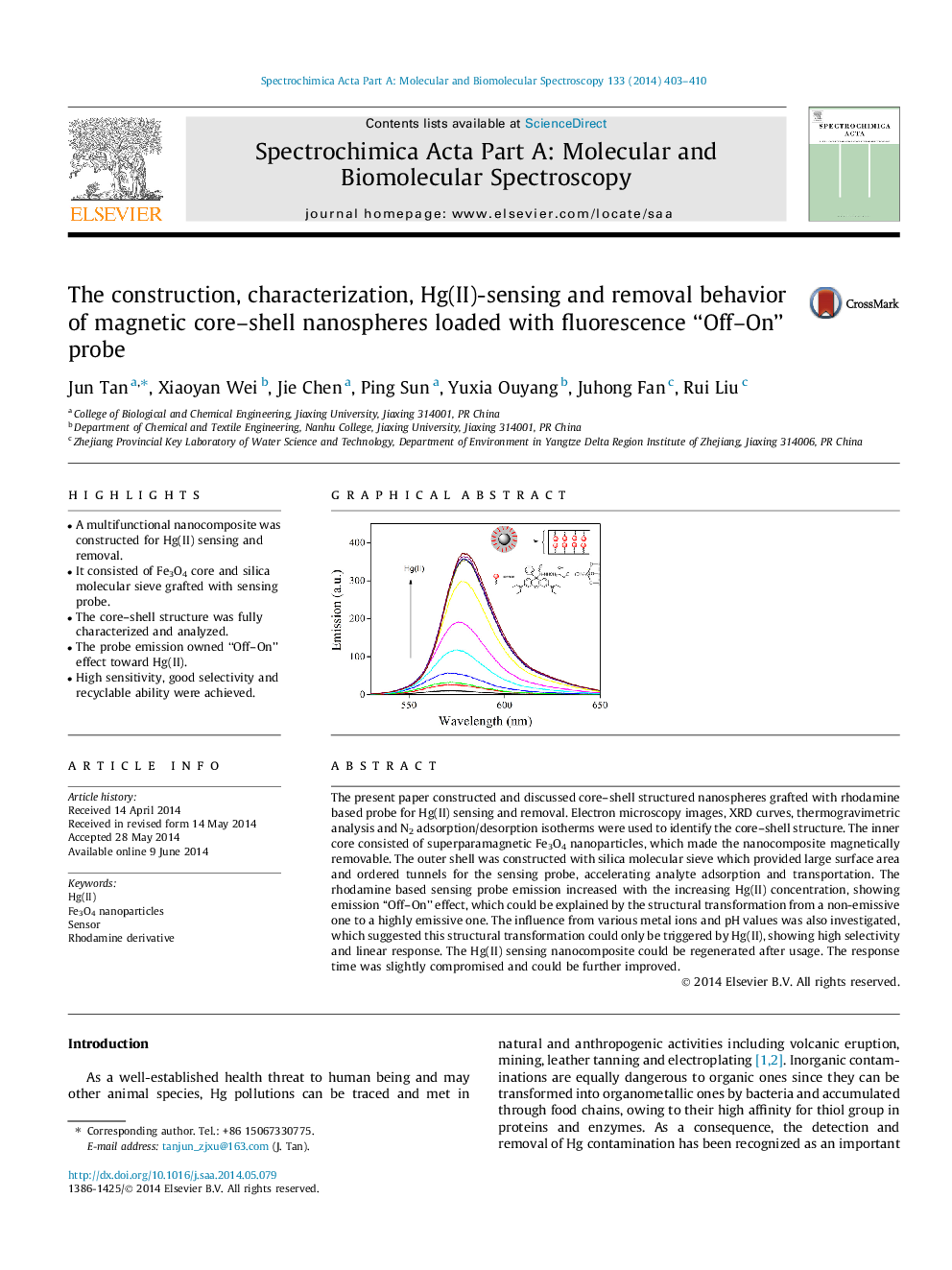| Article ID | Journal | Published Year | Pages | File Type |
|---|---|---|---|---|
| 1233466 | Spectrochimica Acta Part A: Molecular and Biomolecular Spectroscopy | 2014 | 8 Pages |
•A multifunctional nanocomposite was constructed for Hg(II) sensing and removal.•It consisted of Fe3O4 core and silica molecular sieve grafted with sensing probe.•The core–shell structure was fully characterized and analyzed.•The probe emission owned “Off–On” effect toward Hg(II).•High sensitivity, good selectivity and recyclable ability were achieved.
The present paper constructed and discussed core–shell structured nanospheres grafted with rhodamine based probe for Hg(II) sensing and removal. Electron microscopy images, XRD curves, thermogravimetric analysis and N2 adsorption/desorption isotherms were used to identify the core–shell structure. The inner core consisted of superparamagnetic Fe3O4 nanoparticles, which made the nanocomposite magnetically removable. The outer shell was constructed with silica molecular sieve which provided large surface area and ordered tunnels for the sensing probe, accelerating analyte adsorption and transportation. The rhodamine based sensing probe emission increased with the increasing Hg(II) concentration, showing emission “Off–On” effect, which could be explained by the structural transformation from a non-emissive one to a highly emissive one. The influence from various metal ions and pH values was also investigated, which suggested this structural transformation could only be triggered by Hg(II), showing high selectivity and linear response. The Hg(II) sensing nanocomposite could be regenerated after usage. The response time was slightly compromised and could be further improved.
Graphical abstractFigure optionsDownload full-size imageDownload as PowerPoint slide
